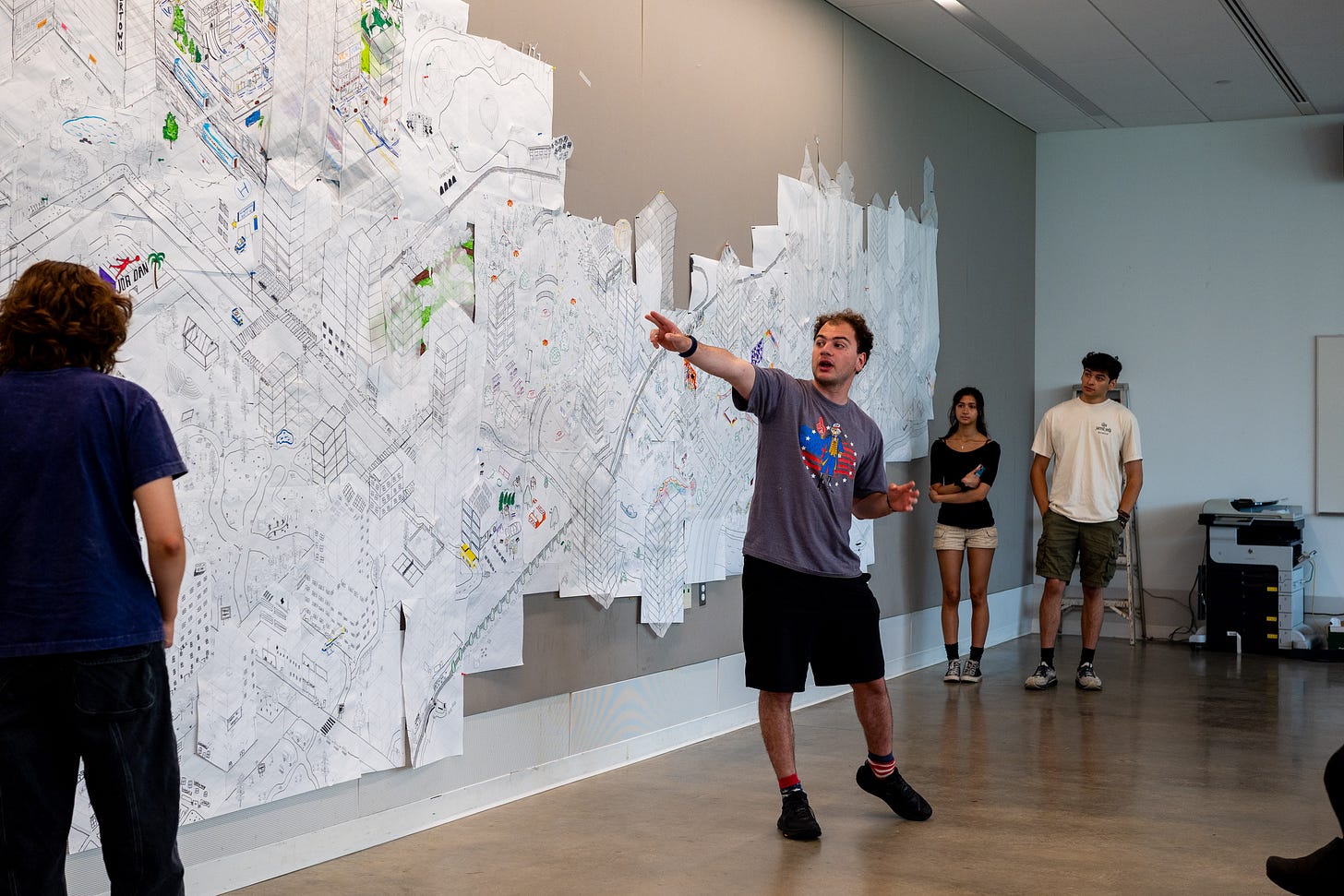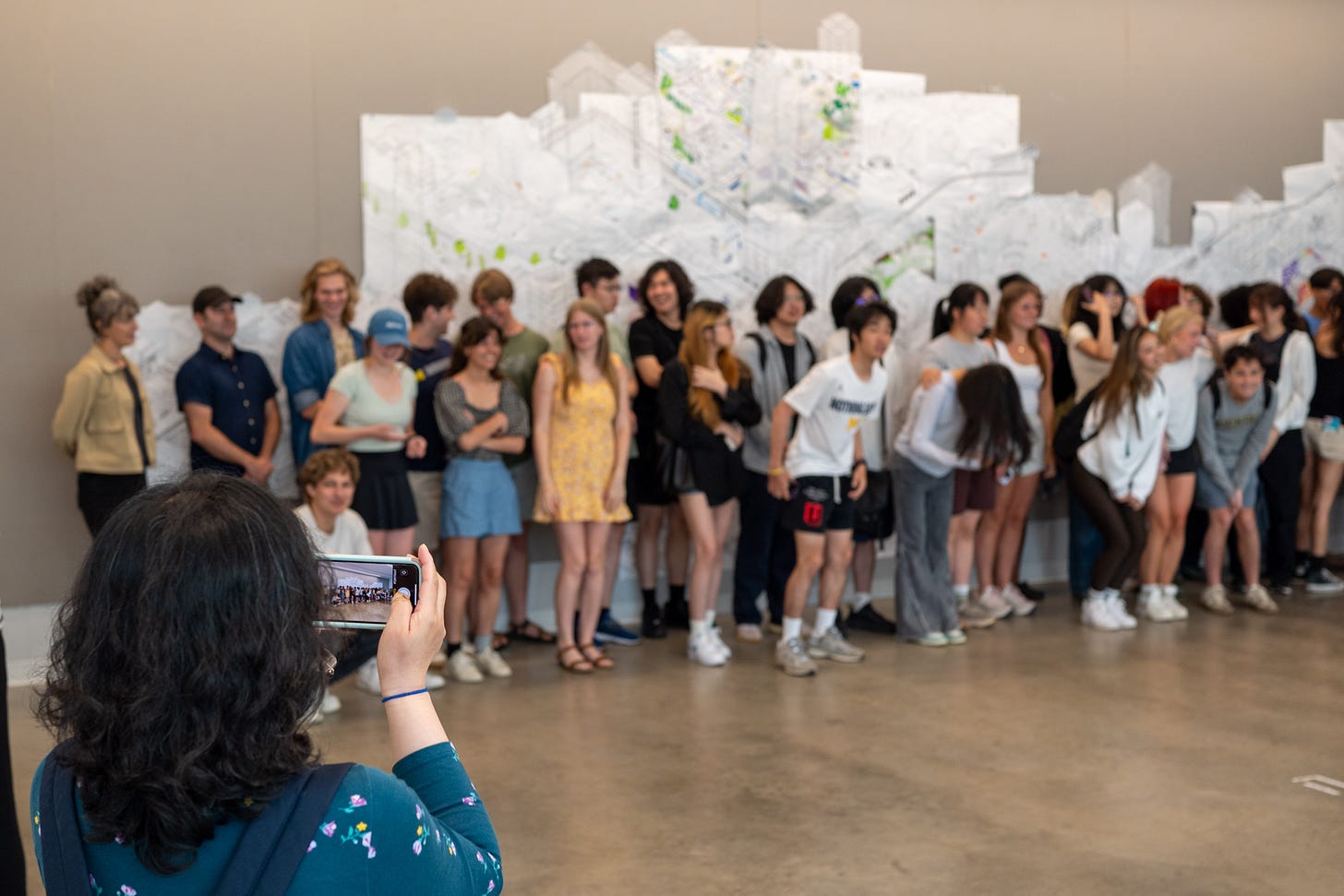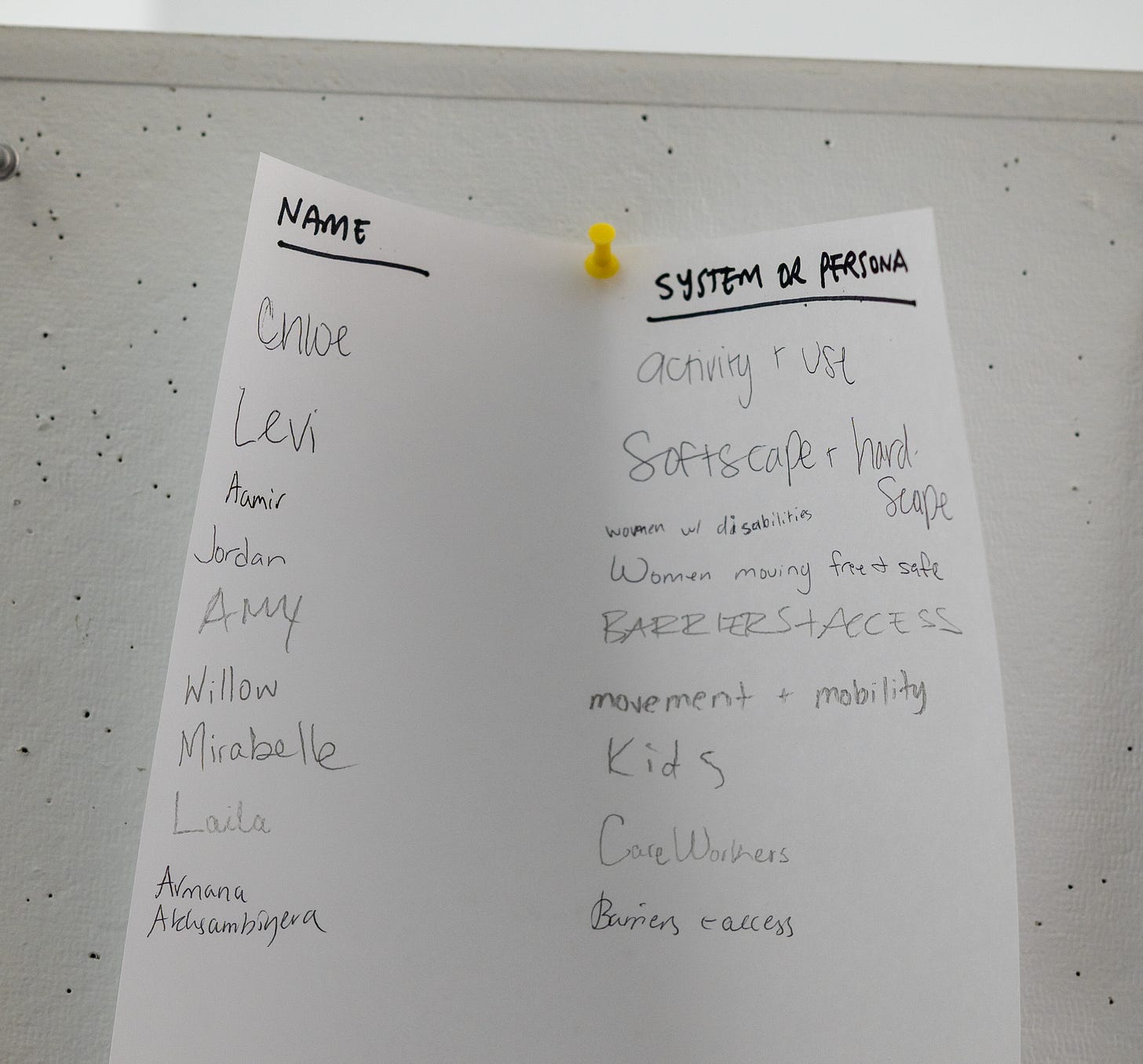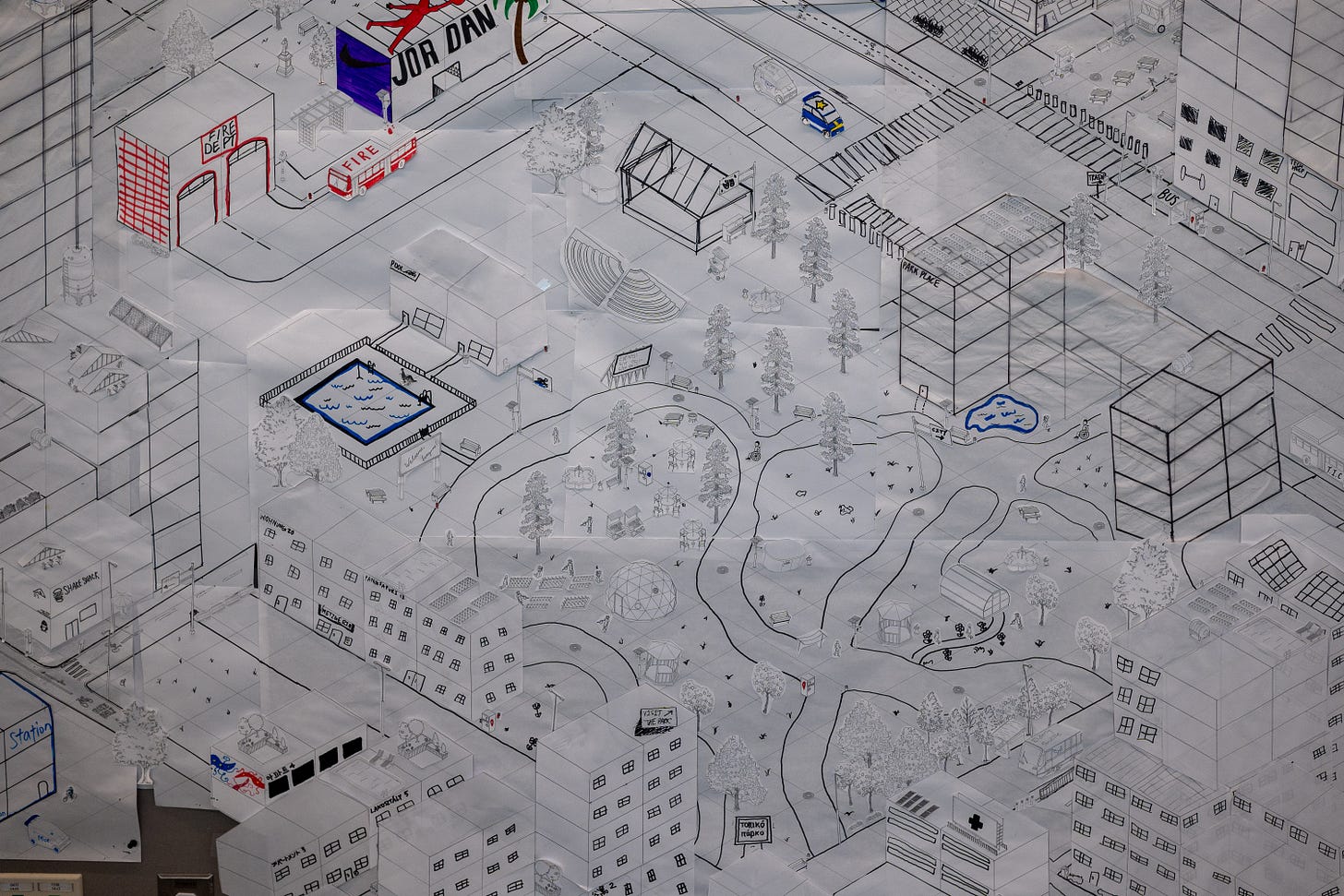Since last time we wrote, the Cities Intensive semester has come to a close, and with it the end of the 2024-2025 school year. We’ll be spending the summer planning for the next semester and catching up on Things Put Aside. Among those items is our ongoing work of figuring out how and where we invite AI into the classroom. The questions we’re pondering at the meeting of AI and education include, what human expertise remains important when machines write code, analyze text, and do a pretty good job of imitating humans? As those tasks get gobbled or augmented by machine intelligence, the role of human discernment become increasingly critical. Some aspect of design is tastemaking, but what is the function of taste, really?
💬 Hello! This is the newsletter of the Urban Technology program at University of Michigan, in which we explore the ways that data, connectivity, computation, and automation can be harnessed to nurture and improve urban life. If you’re new here, try this short video of current students describing urban technology in their own words or this 90 second explainer video.
👅 The Function of Taste
Emily Kutil and Matthew Wizinsky closed out UT 103 this semester with the Incomplete City exercise, culminating in a wall-sized mural of a city that students imagined over the span of a few days. This is always a high point of the year. It’s boisterous, it’s huge, and it integrates the teaching of UT 103 as well as UT 102 led by Phil D’Anieri. In addition to the faculty who gathered this year to give feedback we also had proud parents in the audience. This was a first for us, and a heartwarming one!
The Incomplete City assignment is about simulating the negotiation and low-grade conflict that makes cities into organic agglomerations that even the most forward thinking planning cannot fully predict. Students begin by making villages for specific user group personas and then over time they combine those villages in successive waves of growth until it’s one big city. This year the final collage featured a poly-centric network of parks and plazas dedicated to the city’s different user groups, such as ‘Wheelertown’ serving wheelchair users and skaters alike.
As has happened in the past, this time there was a healthy dose of easter eggs were embedded in the imagery of wall, as well as some evidence of how strongly suburbia looms in the collective imagination of college students in America. The Detroit region’s fanciest palace of capitalism—Somerset Collection mall—even made an appearance, and it stopped me in my tracks.
One of the recurring themes that we wrestle with in this exercise and across the curriculum is how to help students develop their abilities of discernment. From my own positionality of being a Farm Boy Who Moved to the City as Soon as he Could and Never Looked Back, I will come right out and say that to me suburban shopping malls are among the last of urban gestures I would reach for when thinking about how to locate commerce in a city if I have any choice in the matter. So while I must admit that I had a negative reaction to Somerset gracing the Incomplete City this year, the thing that actually gave me pause was noticing myself being a little grossed out by the presence of a mall in what could have otherwise been a utopia and then using that emotion to split the question of judgement into different facets, like a beam of sunlight through a prism.
These are:
Analytical discernment: because we want urban technology students to create meaningful and successful products, services, businesses, and policies in the world after they graduate, we expect that our students can engage in an analysis of the economic, political, and spatial questions of a thing in a place. We want them to be able to ask: based on this place, utilized by these people, is this thing appropriate? That’s the basic question that we ask again and again in our design studios as a way to evaluate the creative outputs that they come up with. Since the Incomplete City is in their first year, the role of analytical discernment in this exercise is admittedly at the beginner level.
Aesthetic discernment: because we want urban technology students to be inventive and creative, the role of aesthetics for our students is to have an informed sense of what they value, and therefore be able to align their concrete imagination with those values. We want them to be able to say: I think this needs to happen, and it needs to be like this for it to be most effective. The “like this” includes things like tone, character, scale, proportion, legibility, and the ineffable “smell” or “flavor”—those gooey aspects of design decisions that contribute to whether an idea is culturally adept or out of touch.
Intuitive discernment: because we want urban technology students to be biased toward action, the role of intuition is to be able to keep going. To move. If I’m honest with myself, this is not really a separate category of judgement so much as an amalgam of the analytical and the aesthetic, sped up. It’s the gut check of “are we headed in the right direction?,” and because of that it’s absolutely the hardest form of discernment to develop. Intuition is fed by experience.
Across all three facets of discernment described above, the function of taste is to help students separate good enough from truly special and this is important because I want our students to be aspirational, for themselves and for those who experience or become part of the things they create. Our students should make technology that enables the life they want, not the life they think is merely possible. I suppose I want them to be dissatisfied with the status quo. Maybe they’re not mall-haters like me, but there should be something they aspire to that’s indescribable using the references of today. If our students are truly in touch with what they value and find aspirational, then AI cannot tell them what is ‘good,’ and that’s a good thing.
We support the development of our students’ sense of taste by expanding their set of references for urban space and technologies. For instance, when we take them to the arboretum in Ann Arbor or Lafayette Park in Detroit, these are examples of truly special places created in response to unique geospatial, historical, and human conditions. They’re not special in uncomplicated ways by any means, and grappling with compromised greatness is part of the exercise. This teaching is also uniquely important to the life stage of our students as undergraduates. While I expect that every one of them has a favorite park when they enter college, I hope that by the time they leave they have discovered a new favorite, even if it’s something they’ve only read about or heard about from a peer. This is an aspect where AI may have some usefulness, such as by suggesting references for students to learn more about (though the smart students will write prompts to the effect of, “give me a list of inspiring parks and leave your florid commentary out of it TYVM”).
Taste as a way of segmenting ideas and enabling aspiration is tricky because it can easily become a Kantian idea of universal aesthetics without any means of acknowledging difference. On the contrary, the reason I want students to develop a sense of taste is so that they know themselves better. Our goal needs to be cultivating the ability of our students to know what they like well enough to also know when the thing they like is not the right thing for a given place, or community, or moment in time. Call it the Somerset Principle: Many things have a time and a place in which they are appropriate, but no things are appropriate in all times and places.
As I think about the fall semester and my own teaching, my very personal take is that coding and writing, and even analyzing and “reasoning” are cheap in an era of widespread machine intelligence. In response, I’m excited to explore the ways in which we support students’ development of self-awareness and the cultivation of an informed sense of taste. These are the fuel of human decision making. When we dwell on appropriateness, machines may have suggestions but they do not have answers.
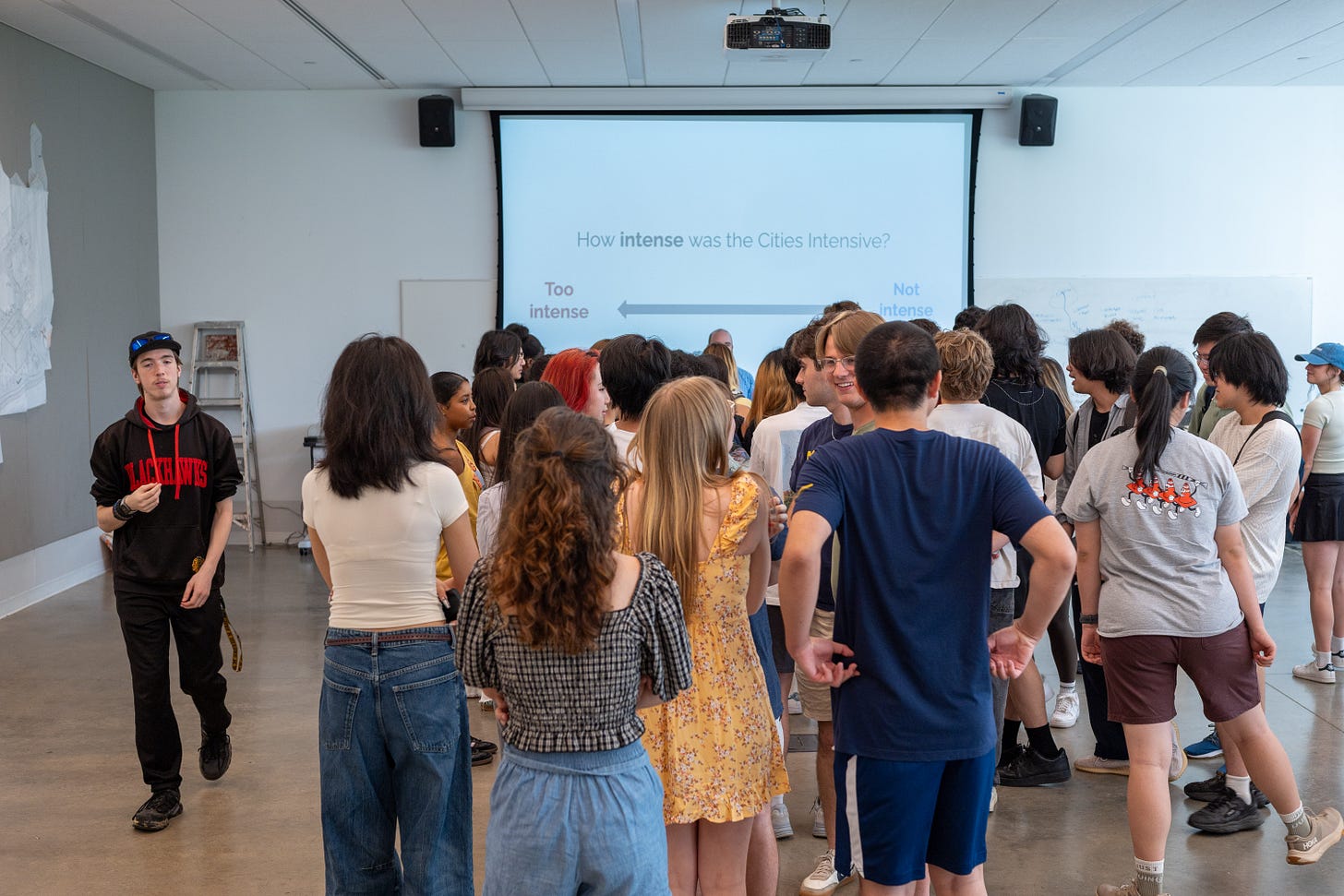
These weeks: Have a great summer, readers. See you in September! 🏃




